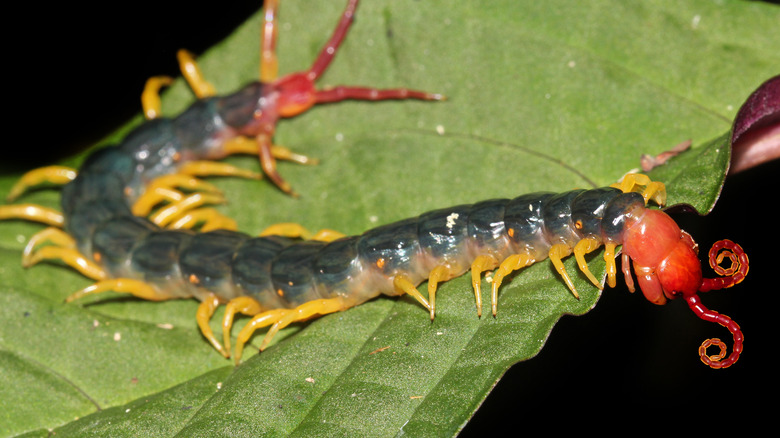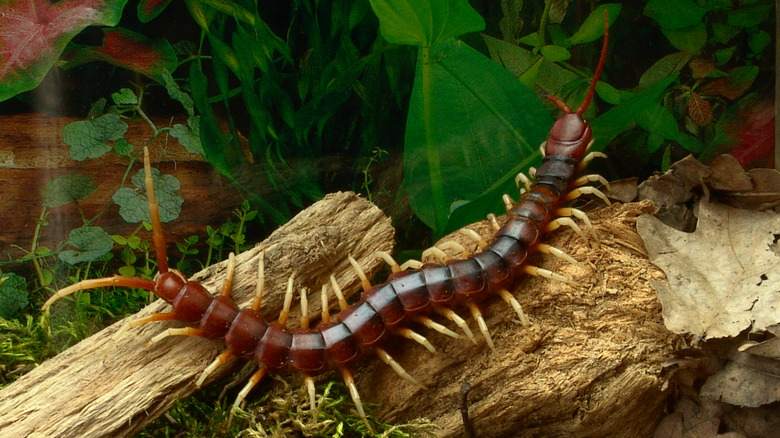Why You Should Avoid The Amazonian Giant Centipede
Centipedes, despite their many legs, aren't typically the largest creepy crawlies around, but many species around the Amazon rainforest aren't typical at all. The world's largest centipede, the Amazonian giant centipede, is found in the tropical forests of northern South America and the southern Caribbean islands like Aruba and Trinidad (via iNaturalist). Clocking in at over a foot long, these bug behemoths are more than just a jumbo version of the relatively harmless centipedes more common throughout the rest of the world; in fact, they're quite dangerous.
While most bugs tend to scavenge on plants or dead animals, the Amazonian giant centipede actually hunts for its food, taking on anything it can overpower, which is quite a lot, actually. While insects and small spiders are relatively easy prey, it can take on bigger bugs like tarantulas and scorpions, or even vertebrates like lizards, frogs, snakes, birds, bats, and mice. They're also highly venomous, claiming the life of a Venezuelan toddler in 2014.
The centipedes have unique hunting techniques
These myriapods — not insects, which have six legs — are not usually lethal to humans, but should still be avoided if possible (via Candide Gardening). Their toxic venom can cause severe pain, swelling, and nausea, and they will bite to defend themselves if they feel threatened. Luckily, these centipedes are nocturnal, so humans rarely come across them; even if they do, they're slow-moving and avoidable.
The centipedes are already remarkable for their ambitious prey, but how they catch that prey is even more amazing — and slightly terrifying. To catch bats, the Amazonian giant centipedes have been known to crawl into bat caves and climb the walls until they are near or on the cave's ceiling. Then their front legs will grab hold of the bats, dangling from the cave walls, with only a few of their rear legs holding on for support. They sustain this precarious position, ironically similar to a sleeping bat, for extended periods of time, even while holding and eating their much heavier prey. Perhaps it's for the best that these critters do their business in the dark.

